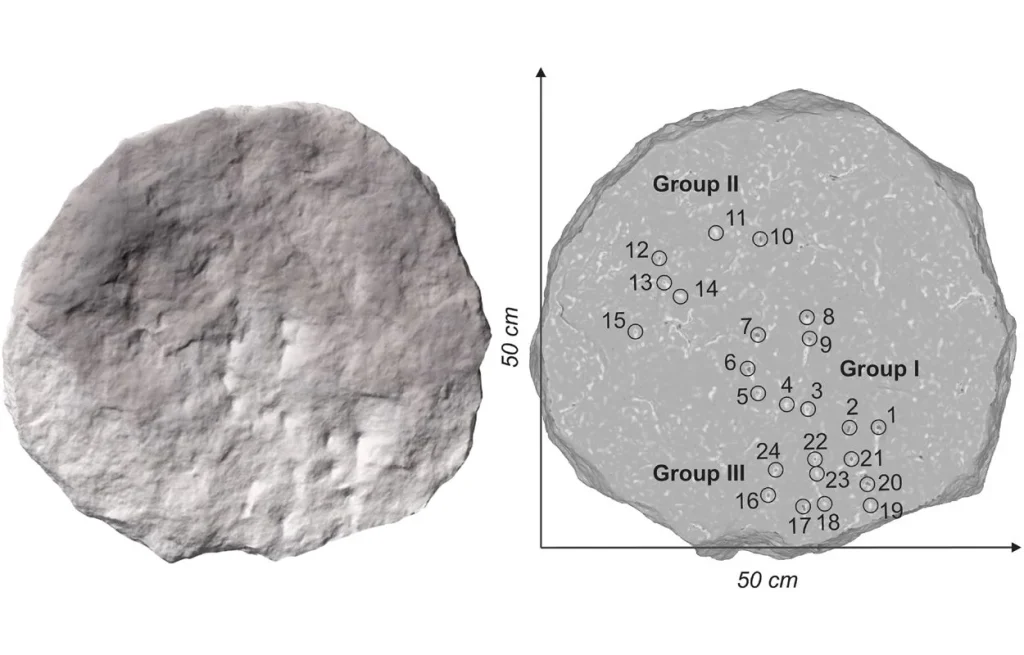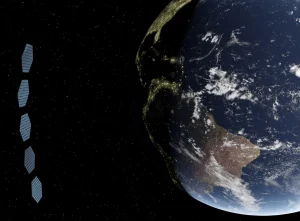Ancient Carvings on Disk in Italy May be a Star Map
19th Jan 2024
Recent findings have sparked a debate among experts about a stone disk that may represent one of the world’s oldest renderings of the night sky. The disk, found near the Rupinpiccolo protohistoric hill fort located in the northwestern part of Italy, bears peculiar markings that could be interpreted as an ancient star map.
The carvings on the front and back of the stone, numbering close to 30, might indicate the positions of the brightest stars visible to night sky observers who created it nearly 2,400 years ago.
Unravelling the Mystery of Rupinpiccolo’s Mysterious Stone Disk
The castelliere of Rupinpiccolo, situated near the border between Slovenia and northeastern Italy, is a vast complex of ancient ruins that were first recorded in the late 19th century. This sprawling structure was an ancient defense system with massive walls measuring seven meters in width. However, it was almost a century later before excavations were conducted.
Astronomer and former Astronomical Observatory of Trieste director Paolo Molaro, along with Federico Bernardini, an archaeologist working with the Abdus Salam International Center for Theoretical Physics at Trieste, Italy, have recently claimed that nine of the 29 markings on the mysterious stone found at Rupinpiccolo correspond to constellations that were visible in the sky when the stone was carved.

Molaro and Bernardini have identified nine of the markings on the stone as corresponding to the Tail of Scorpius. In contrast, five others are identical to the position of Orion’s Belt, along with Betelgeuse and Rigel. They have also found that nine of the carvings on the same side bear a striking resemblance to the position of the Pleiades, and on the other side, a series of marks appear to be similar to Cassiopeia.
Both researchers have pointed out that the markings on the stone are similar to the patterns of constellations such as Orion and Scorpius that were observable in the sky during the time when the fort was constructed, i.e., sometime between 1800 and 400 BCE.
Strong Correlation Found Between Etchings on Stone and Positions of Stars
According to Molaro and Bernardini, there is a strong similarity between the positions of the stars and the 28 etchings on the stone, with a Pearson correlation coefficient greater than 0.99. Statisticians use this coefficient to determine the strength of the linear association between two data sets. They have also stated that the likelihood of an incorrect correlation is less than 0.001, indicating a high degree of accuracy in their findings.
Although the researchers have identified many markings on the front of the stone corresponding to known celestial features, other etchings on the back side are not as easily identifiable.







Thank you for your comment! It will be visible on the site after moderation.